The shoulder is complicated. With 3 joints making up the entire structure, there is a lot to consider when trying to stay optimal.
Active people usually have 3 different types of issues when it comes to the shoulder:
- Their shoulder isn’t stable or strong.
- There is a lack of mobility forcing incorrect movement patterns
- Overuse and compensation.
And sometimes, it can be a bit of all three happening at once.
No matter what issue is causing your discomfort, or discomfort when lifting, there are a few preventative/restorative things you can do to strengthen all 3 joints, use them properly, and gain some mobility.
Disclaimer: This is not intended to be treated as medical advice. Please seek out reputable healthcare or functional provider to get a proper diagnosis, especially if this has been persisting for a long period of time.
Let’s take a step back and discuss each of the joints, the muscles connected to them, why they matter, and what you can do to strengthen them.
The Sterno-Clavicular Joint
The sterno-clavilcular joint is a fairly strong joint. It’s where your clavicle and sternum meet. It’s super important for elevating the shoulder. People typically don’t have many issues with this joint, unless they have a direct injury to the site. (football hit, cleans/front squats gone wrong, log cleans in strongman, broken during chilhood, or any other blunt-force trauma. As long as it doesn’t limit your mobility and doesn’t cause extra pain- you shouldn’t need to worry about it.
The Scapula-Thoracic Joint
The scapula-thoracic joint is important for aiding in the movement in the scapula against the thorax during upward, downward rotation, as well as retraction and protraction.
What two big muscles are responsible for this joint to function properly?
The Serratus Anterior & The Lower Trapezius
The Serratus Anterior
Why it’s important
The SA helps stabilize the scapula, keeping it from “winging” out and helping it move smoothly along the ribcage.
What you can do to help it:
The Lower Trap
What is the Lower Trap?
The lower trapezius is one muscle that plays an important role in scapula movement and positioning, and also dynamic scapula stability.
Why recruitment is important.
Usually, most of our tension is stored in the Upper Traps because we can’t fully comprehend how NOT to use them for everything we do. We also don’t have strong lower traps, and naturally stronger upper traps just by nature of how we move throughout life. This can cause neck pain/discomfort and improper shoulder movement.
What you can do to help:
-Shoulder Extension w/ External Rotation (SEER)
-Prone Y’s
The Glenohumeral Joint
The glenohumeral joint is the glue that holds the shoulder together. When someone discusses the rotator cuff, their talking about the muscles that surround the GH joint. Getting these strong and moving correctly is huge in fighting nagging injury.
The Rotator Cuff
What makes up the RC
The Subscapularis, Supraspinatus, Infraspinatus, and the Teres Minor.
Why strengthening is important
These muscles engulf the GH joint to provide strength and stability during overhead movements, horizontal pressing movements, dynamic movements (i.e: sport-specific movements), and various closed-chain movements (crawling, pushups, etc).
If these muscles are not strong or stable, it’s similar to building a huge house on a rocky foundation. You can do it, but it’s going to cave eventually. If you’re an overhead athlete and performing repetitive movements such as spiking a volleyball over and over again, strengthening becomes crucial for injury prevention.
What you can do:
External rotation w/ band, weight, or in a plank stance to tackle stability of the loaded shoulder as well.
